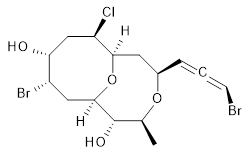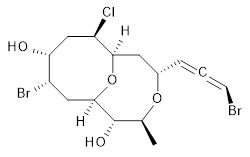Highlighted by Jan Jensen
This paper has already been highlighted here and here, so I'll just briefly summarise.
Figure 1B from the paper (CC BY-NC-ND 4.0)
This paper has already been highlighted here and here, so I'll just briefly summarise.
The grid used for the numerical integration in DFT calculations is defined relative to the Cartesian axes, so rotating the molecule will change the integration grid and, hence, the energy. This has been known for some time and, f.eks. Gaussian09 uses a default grid size (Fine, 75,302) where the effect on the electronic energy variation is usually negligible.
Bootsma and Wheeler show that the vibrational entropy and, hence, the free energy is significantly more sensitive to grid size than the electronic energy. Using the Fine grid, the differences in relative free energy changes can be as large as 4 kcal/mol, which could significantly change conclusion regarding mechanisms, etc. The effect comes from the variation in low frequency vibrational modes and the effect can be reduced a little by scaling these frequencies.
However, the errors really only become acceptable when using the UltraFine grid size, which is the default in Gaussian16, especially combined with frequency scaling (which one should do anyway to get consistent results). If you are using Gaussian09 or some other quantum program to compute relative free energies it is definitely a good idea to look at the default grid size and perform some tests.
Note that if you want to perform such tests yourself, you need to re-optimise the molecule after you rotate it because the gradient is also affected by the rotation.




